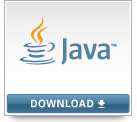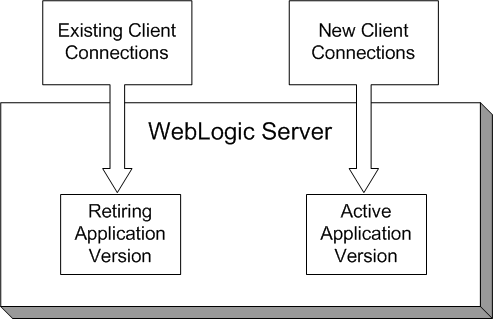OTN Tour 2013 is over, and after
7 countries, all I have to tell you is this:
#JavaEE7 rocks and people loved it! It is quite coincidence that at the end, I went to 7 cities in Latin America to give my "
What's new in Java EE 7" talk plus the
Hands-on Lab and other talks like the one about
WebLogic 12c and another about
GlassFish 4.
In reality, I had also planned to go to Panama City, and San José in Costa Rica. Well, things sometimes don't always go as planned, and I couldn't go to Panama. And when I got to Costa Rica, I was sent back to Mexico because I was not with my Yellow Fever card. But I'm looking forward to Java EE 9, if you know what I mean. :-) In the end, I visited 7 cities:
- Mexico City, Mexico
- Guadalajara, Mexico
- Santiago, Chile
- Lima, Peru
- Montevideo, Uruguay
- Buenos Aires, Argentina
- São Paulo, Brazil
Now, before I talk about each city, let me explain something to you really important:
OTN Tour is organized by
LAOUC, the
Latin America Oracle Users Community. And at each participant city, local
OUGs help to organize, set a venue, local partners as sponsors, and also work with the speakers' agenda. Oracle does sponsor these events, both by supporting the local event, as well by sponsoring Oracle ACEDs to travel with the tour. If you want to become an Oracle ACE, all you need to do is to learn about the
Oracle ACE program.
We all know how Database-driven Oracle has been for the past decades, and we understand that most off the Oracle User Groups are more interested on Database stuff. But this is changing. There was a lot of interest during the whole tour on Middleware and Development technologies such as Java EE, ADF, WebLogic, and GlassFish.
Dana Singleterry joined me in this tour and brought with him a lot of information on ADF 12c and ADF Mobile. Don't forget to
follow him on Twitter.
By the way, this tour was great to improve my Spanish. Yeah, you read it: Spaaaanish. I'm from Brazil, and we speak Portuguese there. And Brazil is the
only country in Latin America that speaks Portuguese. To improve my learning, at every country I visited I tried to learn local slangs. So for each city, I did a special slide for Java EE 7. Really, you gotta learn local slangs to be cool with a 2nd/3rd language :-P Anyway, it all started on
July 21st in the morning...
Mexico City (DF), Mexico - July 26th
Like I told before, I could not go to Panama nor Costa Rica, so I stayed in Mexico the first week, and worked with Oracle folks there, did customer meetings, worked from hotel, etc. On Friday I finally started. Great venue at
Egade Business School as well a very nice setup with coffeebreaks and lunch for everyone. Kudos to
ORAMEX, the local OUG. In Mexico, I gave my Java EE talk, and did the Hands-on.
Spanish Lesson Part 1
By the way,
chingar is a word in Mexican Spanish that means a lot of things, both for good or bad contexts. It can be used so widely that there is even a "chingonary", or a dictionary on how to use it, that
I had to buy one for me in a local bookstore. In this case, it means "Java EE 7 has so many new technologies inside", but of course using a slang, almost a swearing word :P
Guadalajara, Mexico - July 27th
Guadalajara was not part of the official OTN Tour. Actually, it was an
Oracle Java Day organized by the local Oracle office, with people from the Oracle Curriculum Development Team and where some of the great content of
Oracle Learning Library is coming from. This conference was led by
Edgar Martinez and I can't say how thankful I am. Edgar and his team did a great job. Everything was perfect: the
great staff team,
pizza for lunch,
the office,
the setup,
the trail, and last but not least, the
happy hour!
Edgar blogged about this as a guest at Java blog, so you may want to read more about this there. Here I gave my Java EE 7 talk, and the hands-on. A lot of people showed up!
Also, all the registration fee for this event was donated to a
local orphans institute. Later, perhaps the best moment of it all: when we were walking on the street after the event looking for a place to dinner, we met with the supporters of this institute.
Santiago, Chile - August 1st
Santiago is an incredible city. It holds about 30% of the entire population of Chile, and I would guess perhaps more than 50% of the entire economy there. It is one of the most modern city, with great infrastructure and easy access to several touristic places. It was where I could enjoy a tourist-like day, so expect to see
regular pictures. :P
Spanish Lesson Part 2
The term
bacán in Chilean Spanish means "cool". I had to change my slide here.
The conference here happened at a very nice university, close to a subway station, and here I gave my Java EE 7 talk the hands-on again, and then the
GlassFish in Production Environments. I met with great people here both from Oracle User Groups as well some people from the local Java community. It was also where I first met and talked to
Tim Hall, really great guy, Oracle ACED, an expert on Oracle Database. If you have any questions about OraDB, follow him on Twitter and check his website,
oracle-base.com.
Lima, Peru - August 3rd
One day after Santiago, I was flying to Lima for the third country of my list. Lima has really nice areas, like
Miraflores so if you plan to visit Peru one day, make sure you stay there to enjoy the best view of the Pacific Ocean. For night life, visit
Barranco, full of bars, restaurants, and nightclubs.
Here I gave my traditional Java EE 7 session, catch up with local Oracle people, and had perhaps one of the crowdest room in the whole tour. The question I made to the attendees in the picture below was:
"Did you like the new stuff in Java EE 7? Raise your hand if yes!!!"
Spanish Lesson Part 3
The term
chévere in Peruvian Spanish means "awesome". It is similar to bacán from Santiago, Chile. But people here prefer to be different. :-) So I had to change my slide again.
More next week
I still have to talk about was this tour in Argentina, Montevideo, and finally Brazil. But I will leave that for the next post.
By the way, to keep posted on this,
follow me on Twitter! Or
Google+... Or
Facebook... :-)




















